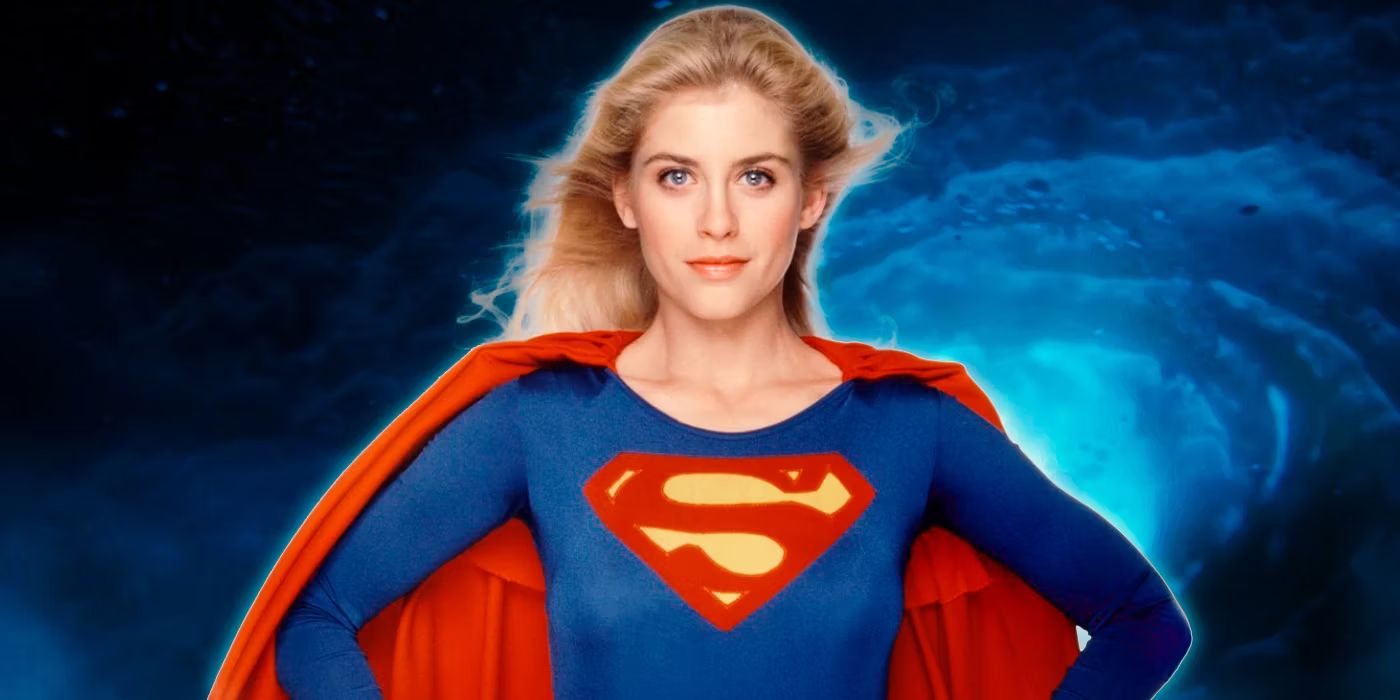 ★★★
★★★
“Revisiting the original Maid of Might”
Before Supergirl: Woman of Tomorrow arrives on our screens in 2026, starring Milly Alcock from House of the Dragon in the title role, I thought, it would be a good time to revisit the original Supergirl movie, which was released in the United States forty years ago this month. So what is Supergirl? A campy trash/cult classic? A fine, forgotten superhero movie? A guilty pleasure? A lame forgettable flop of the 80s? Hopefully, after reading this review you’ll be able to make your own, well-informed judgment!
Originally, the character of Superman’s cousin was supposed to appear in Superman III, but after a new script was written, the character was moved to her own movie. Alexander and Ilya Salkind, the producers who had given Superman life on the big screen in form of Christopher Reeve, probably thought they might score as big with Supergirl as they had with the first two Superman movies. Unfortunately, when Superman III came out in 1983 it was heavily criticized, and fell well below financial expectations, which caused Warner Brothers to give distribution rights to the Salkinds, who would sell it to Tri-Star.
It may not have been the best move, for it seems the film got little marketing (though did get a royal premiere in Britain), and was also sharply edited down. It’s a bit difficult to be certain how many versions of the film exist, but three are well-known: 1) The theatrical cut that runs a bit over 90 minutes. 2) The international version, also called “European theatrical”, though that did not come out in German cinemas. 3) The so-called director’s cut of 138 minutes, which is overly long, especially by 80’s standards. Nowadays, you’re happy when a big movie doesn’t exceed the 2-½ hour mark. How times have changed!
The box-office also ended far, far below expectations and resulted in the Salkinds selling their rights to make any further Superman-related movies. Which is… kind of regrettable, I think, because this movie is not half as bad as it is usually made out to be. I’ll go into its obvious flaws later. But what is the story about? Introducing Supergirl to the film world was not so easy. After all, we had all seen Superman’s home world Krypton blow up in the original movie. But the film actually followed, without really explaining how scientists did it, the original comics which introduced Supergirl in 1959. Argo City, home of Kara Zor-El’s (Slater), was saved from the catastrophe that befell Krypton and in the film survived in “inner space”, whatever that might be – today we would probably call this another dimension.
 Here, Kara lives with her parents, other families and scientist mentor Zaltar (Peter O’Toole). The parents are played by Mia Farrow and Simon Ward in cameos; obviously the producers wanted to give Supergirl the same support, with famous or well-known actors, as they did for the Man of Steel. After losing the Omegahedron, the power source of the city, Kara follows it via unexplained Kryptonian technology to our Earth to bring it back. Unfortunately, evil wanna-be witch, quack doctor and esoteric Selena (Dunaway) has taken it with plans to conquer the world. Their mutual interest in young gardener Ethan (Bochner) and Kara’s need to conceal her real identity, going by the alias of school girl Linda Lee, complicate matters further.
Here, Kara lives with her parents, other families and scientist mentor Zaltar (Peter O’Toole). The parents are played by Mia Farrow and Simon Ward in cameos; obviously the producers wanted to give Supergirl the same support, with famous or well-known actors, as they did for the Man of Steel. After losing the Omegahedron, the power source of the city, Kara follows it via unexplained Kryptonian technology to our Earth to bring it back. Unfortunately, evil wanna-be witch, quack doctor and esoteric Selena (Dunaway) has taken it with plans to conquer the world. Their mutual interest in young gardener Ethan (Bochner) and Kara’s need to conceal her real identity, going by the alias of school girl Linda Lee, complicate matters further.
From that summary, you should be clued in to what the movie is. It’s a loose repackaging of the Superman story; though some aspects are different here, at the core it’s the same. Maybe this was one of the reasons why the movie failed to attract audiences. But the story and some characters chosen for it come with problems too. While Superman could still be seen as science fiction, Supergirl seems more like a fantasy movie. While Clark Kent’s continuous attempts to dupe Lois that he is Superman were used in the original two movies to wonderfully hilarious effect, this aspect doesn’t appear here at all.
Then again, how could it? Supergirl has just arrived on Earth, differently to Superman. Christopher Reeve’s Superman was originally heavily involved in the script but Reeve politely declined; maybe he didn’t want to play second fiddle to someone else? So the script was rewritten, with Superman on a “special mission” in another galaxy. Neither her room mate – who happens to be the younger sister of Lois Lane – nor Jimmy Olsen, the only character from the Superman movies to appear, know her, so there can be no “A-ha!” moment. Nor can love-struck gardener Ethan see that the brunette school girl he was just talking to, is also the blonde girl in the super-dress. Whoever wrote this should get a “D-” in basic logic. At least Superman changed totally in behavior and wore glasses when he played Clark Kent. Here, there is no believable excuse for it.
The film has other problems. One is a lot of unnecessary characters that are neither needed, nor add anything essential to the plot. It’s especially apparent with actors probably cast for their comedic talents. Peter Cook, often well-matched with Dudley Moore on stage and film, might be a good comedian but is totally unfunny here. The same goes for Brenda Vaccaro as Dunaway’s sidekick: compare her to Ned Beatty’s Otis, alongside Gene Hackman, and you’ll see how ineffective Vaccaro’s role is here. I’ve already mentioned Lucy Lane and Jimmy Olsen. Why are they here? What do they add to the story? Do they do anything that has an impact?
Trimming should have happened in the writing phase. If they would have eliminated, reduced or at least given these characters something of meaning to do in the plot, the movie might have been much better. Additionally, there is a side-plot of female bullies picking on Kara, seeming only to serve the purpose of showing that Kara has the same heat-vision as her cousin. Other strange decisions were made by the screenwriter, and slid past the producer and director. When Kara lands on Earth the first people she meets are two drunk, wannabe rapists who try to molest her. Hurray for feminism, I guess, as Kara shows them that a Kryptonian teen can defend herself. It’s an ill-fitting scene in a movie apparently intended to be family- and kid-friendly. Wonder Woman 1984 also had such a stupid, distracting scene. So either there is something I don’t understand, or film directors and screenwriters have not learned much over the four decades between the movies!
Also, the “love story” between Ethan and Kara is essentially a “non-love story”. His love for her is induced by Selena’s magical potion, who wants the man for herself. If the first person Ethan saw after waking up had been a cow, would he have fallen in love with a cow? The length of the movie was already criticized when it originally came out, even though it was shorter at the time. And the version that I knew from seeing the movie in the late eighties on German TV was even shorter. You can hardly expect a movie, of whatever quality, that has been edited down so much to still make much sense at all.
 It’s no surprise O’Toole and Dunaway were nominated for Razzie Awards, though it’s not all their fault. Obviously, director Jeannot Szwarc had no problem with Dunaway going as campy as she wanted. It’s a pity because her role could have been convincing or even menacing, played straight. There is no doubt Dunaway, with a fine reputation of playing difficult characters, could have given a good, villainous performance. Heck, she already played a first class femme fatale in the Musketeer movies for the Salkinds in the 70’s. Of course when you go camp, you can hardly blame Dunaway for trying to repeat what Gene Hackman successfully did as Lex Luthor, But you have to be really funny, something that worked for the Hackman-Beatty pairing but not here.
It’s no surprise O’Toole and Dunaway were nominated for Razzie Awards, though it’s not all their fault. Obviously, director Jeannot Szwarc had no problem with Dunaway going as campy as she wanted. It’s a pity because her role could have been convincing or even menacing, played straight. There is no doubt Dunaway, with a fine reputation of playing difficult characters, could have given a good, villainous performance. Heck, she already played a first class femme fatale in the Musketeer movies for the Salkinds in the 70’s. Of course when you go camp, you can hardly blame Dunaway for trying to repeat what Gene Hackman successfully did as Lex Luthor, But you have to be really funny, something that worked for the Hackman-Beatty pairing but not here.
O’Toole has only two significant scenes in the movie, at the beginning and the end. His performance in the first seems a bit uninspired and odd. I wouldn’t be surprised if he was drunk while doing it; the actor was famous for this, like Richard Burton or Oliver Reed. The second, where Zaltar seems to have given up all hope and sacrifices himself for Kara, is quite well done and touching. Although a strange decision was made in the German dubbing, where someone came up with the idea of casting the German voice of Clint Eastwood for him!
For all the negatives I have listed, there are quite a few positives, shining bright in this movie pursued by bad luck. Helen Slater probably gave the performance of her career. She is really, really good playing the female version of the true-blue hero, as well as the innocent-looking big-eyed teenager in Argo City, and her cute school girl role of Linda Lee. Slater was even nominated for a Saturn Award for her performance. If the film had been better – or at least financially successful – maybe she could have had a similar career to the one Christopher Reeve enjoyed due to his Superman role? Alas, it wasn’t to be…
The special effects of the film may look dated today – and they are. But considering all of it was before the advent of CGI, digital and computer effects, it’s impressive what could be achieved by in-camera-tricks, visual illusions, miniature and composite effects. Sure, a lot of effects could be simply generated on the computer today. But even a cardboard photo cut-out of Supergirl, drawn quickly out of the water, is astonishingly effective and can only be recognized for what it is today, due to DVDs and Blu-Rays. How do you show Supergirl almost torn to pieces by a monster in 1984? At that time all the filmmakers had were some distortion effects by a changed perspective – nevertheless, it works, and there are some very nice effects.
As kitschy as it seems, I personally loved the aerial ballet of Supergirl when she arrives. For the first time too, we get to see the Phantom Zone: it’s constantly mentioned in the Superman movies, but here it is actually a set in Britain’s Pinewood studios (used for many Bond movies), and must have been one helluva work to create. Selena’s traps and the shaking, fiery ground are impressive, as are her manipulations in the abandoned event park. My favourite effect might be Kara fighting an invisible monster which you only can recognize by its impact on the environment, e.g. giant footprints on the ground, breaking fences, etc. This seems directly inspired by the classic “ID” monster from Forbidden Planet.
All in all, the effects were as good as possible at the time, so shouldn’t be judged by today’s standards. The film in addition boasts great production design, luscious exterior shots, a well-timed tractor-on-the-loose action sequence, appropriate and good-looking costumes (especially for Dunaway), all of which are undeniable pluses. Then there is the – as always – great Jerry Goldsmith score which makes up more than half of the movie’s atmosphere. It’s especially impressive, considering I could hardly imagine anyone else being able to step in the shoes of John Williams, who scored the original Superman score.
 Supergirl is still not a great comic book superhero movie. Nor a bad one: more somewhat mediocre, but kind of sympathetic. As mentioned, the movie had bad luck, being both too late and too early. Too late, as it seems audiences had started to grow tired of the whole Superman circus: within six years people had been exposed to four Superman-related movies. The “All-American” hero had become kind of passé with Schwarzenegger, Stallone and co. introducing the new, harder and gritty anti-hero who would dominate the screens for the next decade. Alternatively, you had more goofy heroes like Eddie Murphy in Beverly Hills Cop or the Ghostbusters. A simple, straightforward hero didn’t fit into this time anymore.
Supergirl is still not a great comic book superhero movie. Nor a bad one: more somewhat mediocre, but kind of sympathetic. As mentioned, the movie had bad luck, being both too late and too early. Too late, as it seems audiences had started to grow tired of the whole Superman circus: within six years people had been exposed to four Superman-related movies. The “All-American” hero had become kind of passé with Schwarzenegger, Stallone and co. introducing the new, harder and gritty anti-hero who would dominate the screens for the next decade. Alternatively, you had more goofy heroes like Eddie Murphy in Beverly Hills Cop or the Ghostbusters. A simple, straightforward hero didn’t fit into this time anymore.
But the movie might have been too early as well. At that time, audiences were simply not interested in female comic book heroes as flops like Red Sonja, Sheena and Brenda Starr proved again and again. Even a further attempt in the early 2000s with Elektra, Catwoman and the like failed. It’s only recently that movies like Black Widow, Captain Marvel or Wonder Woman are really scoring big at the box-office. This was also before the “girl power” era. In the late 90s and early 2000s, with TV shows like Charmed, Buffy, Xena, Kim Possible and movies like The Craft, Mean Girls or Legally Blonde, a movie about a school girl fighting an evil, powerful witch could have scored big – but well… not in the 80s!
So… maybe “Supergirl” was just a bit ahead of its time. Judge for yourself. What about my interest in the movie? Well, I saw photos of it in film magazines, years after it was in cinemas. At that time the movie had not been shown on TV and my family had no VCR yet. All I had was some photos and my imagination to tell me what the movie might be about. For me the film belongs in the category of enjoyable fantasy movies of the 1980s together with fare like The Neverending Story or Highlander. That photo of young Helen Slater with her clenched fist, flying with the glowing sun in the background, still hangs on my wall! So I may be a bit biased concerning the film. But aren’t we all regarding our favourites?
Dir: Jeannot Szwarc
Star: Helen Slater, Faye Dunaway, Hart Bochner, Peter Cook





 It’s interesting to compare the approach taken in this biopic of aviation heroine Amy Johnson, made in 1984, with the one over 40 years earlier (and shortly after her death) in
It’s interesting to compare the approach taken in this biopic of aviation heroine Amy Johnson, made in 1984, with the one over 40 years earlier (and shortly after her death) in 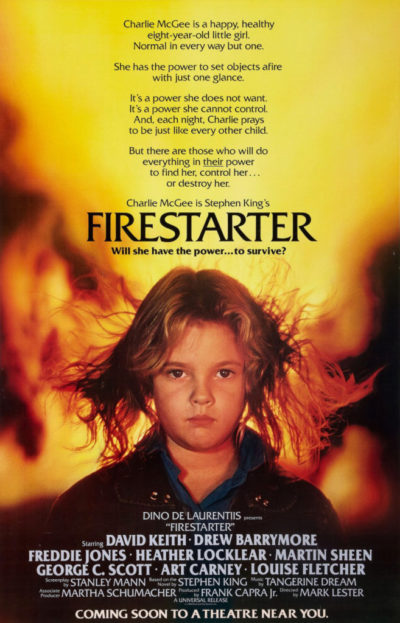 It’s somewhat ironic that John Carpenter was originally supposed to direct this. However, after The Thing tanked at the box-office, he was let go from the project, and replaced by the more commercially “safe” Lester. The irony being that The Thing is now regarded (rightfully) as one of the greatest scifi/horror films of all time, while this is… not. It’s very much a mid-tier Stephen King adaptation, far less well remembered than the similarly themed The Dead Zone, from around the same time. I can understand why: it’s lumbering when it needs to be taut, needlessly coming in a little shy of two hours, and only comes to life at the end, when a pissed-off Drew gets enough XP to learn her Level 3 Fireball spell.
It’s somewhat ironic that John Carpenter was originally supposed to direct this. However, after The Thing tanked at the box-office, he was let go from the project, and replaced by the more commercially “safe” Lester. The irony being that The Thing is now regarded (rightfully) as one of the greatest scifi/horror films of all time, while this is… not. It’s very much a mid-tier Stephen King adaptation, far less well remembered than the similarly themed The Dead Zone, from around the same time. I can understand why: it’s lumbering when it needs to be taut, needlessly coming in a little shy of two hours, and only comes to life at the end, when a pissed-off Drew gets enough XP to learn her Level 3 Fireball spell. This is probably a good one and a half stars more than I expected, based on the synopsis and screen shots, which made it seem considerably more like porn with a minor wrestling subplot. Okay, it is not exactly fun for all the family, to put it
This is probably a good one and a half stars more than I expected, based on the synopsis and screen shots, which made it seem considerably more like porn with a minor wrestling subplot. Okay, it is not exactly fun for all the family, to put it 
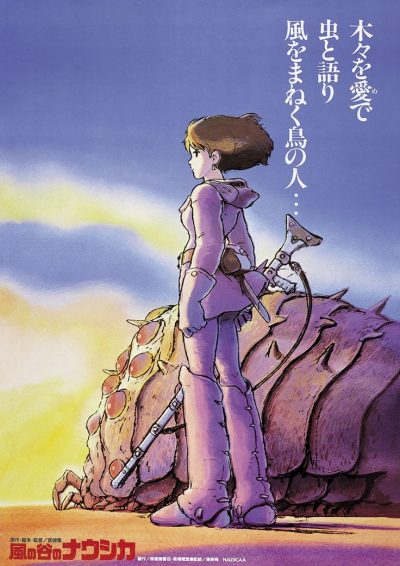
 After the enormous critical, if not commercial, success of Lupin III: Castle of Cagliostro, Miyazaki was commissioned to create a manga series for Animage magazine, with a potential film adaptation attached. Publication began in early 1982, but it would take a dozen years, albeit of intermittent publication, before that story was complete. When the series’s popularity among Animage readers was established, work began on the film adaptation, covering the early portion of the manga. Since this was before Miyazaki’s own Studio Ghibli was founded, an external company, Topcraft, were commissioned to create the animation. The budget was only $1 million, with a mere nine-month production schedule leading up to its release in March 1984.
After the enormous critical, if not commercial, success of Lupin III: Castle of Cagliostro, Miyazaki was commissioned to create a manga series for Animage magazine, with a potential film adaptation attached. Publication began in early 1982, but it would take a dozen years, albeit of intermittent publication, before that story was complete. When the series’s popularity among Animage readers was established, work began on the film adaptation, covering the early portion of the manga. Since this was before Miyazaki’s own Studio Ghibli was founded, an external company, Topcraft, were commissioned to create the animation. The budget was only $1 million, with a mere nine-month production schedule leading up to its release in March 1984.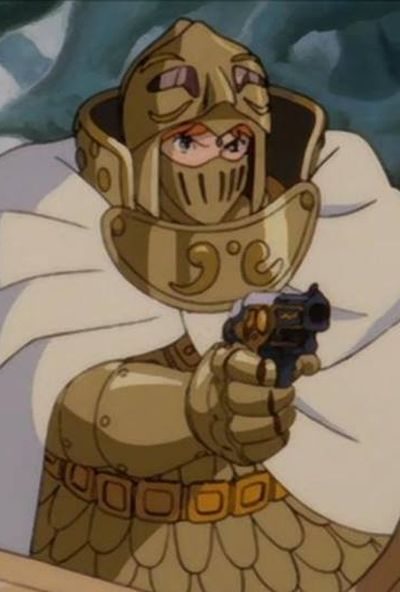 Miyazaki’s father ran an airplane parts company in World War II, and even his film company, Studio Ghibli, was named after an Italian plane. Almost every one of his movies
Miyazaki’s father ran an airplane parts company in World War II, and even his film company, Studio Ghibli, was named after an Italian plane. Almost every one of his movies 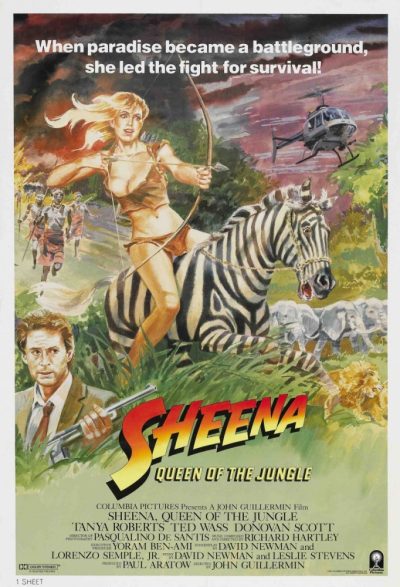
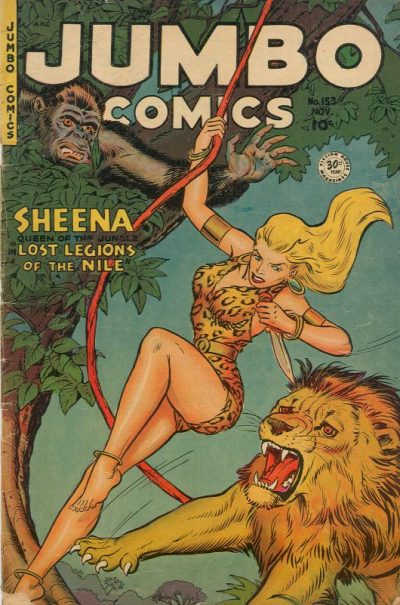 But let’s jump a bit back in time: I love those flashbacks! Sheena started as a British (!) comic strip in 1937, co-created by Will Eisner (The Spirit), and debuting in the US in 1938. That was a good 3 years before Wonder Woman appeared for the first time, which essentially makes her the first female comic book hero ever. The character is essentially a female version of Tarzan, strongly taking inspiration from a 1904 book, “Green Mansions” by William Henry Hudson. In this, a cynical rebel from civilization meets cute feral girl Rina in the South American jungle. The book was filmed in 1959, starring a pre-Psycho Anthony Perkins and Audrey Hepburn, produced by her then-husband Mel Ferrer. But as Rina and Sheena have very little in common, we won’t go into more detail here.
But let’s jump a bit back in time: I love those flashbacks! Sheena started as a British (!) comic strip in 1937, co-created by Will Eisner (The Spirit), and debuting in the US in 1938. That was a good 3 years before Wonder Woman appeared for the first time, which essentially makes her the first female comic book hero ever. The character is essentially a female version of Tarzan, strongly taking inspiration from a 1904 book, “Green Mansions” by William Henry Hudson. In this, a cynical rebel from civilization meets cute feral girl Rina in the South American jungle. The book was filmed in 1959, starring a pre-Psycho Anthony Perkins and Audrey Hepburn, produced by her then-husband Mel Ferrer. But as Rina and Sheena have very little in common, we won’t go into more detail here. The actors… Well… There’s not so much to say about the actors: Tanya Roberts (“3 Angels for Charlie“, the original TV show) is definitely the most well-known here which already tells you enough. Her performance has been often mocked and ridiculed, but I don’t find it terrible. If you play an orphan that has grown up in the jungle. it seems logical that most things from civilization must appear for you like magic e. g. binoculars. The dialogue could have been better here and there but hey, at least we are miles away from Johnny Weismueller Tarzan-talk.
The actors… Well… There’s not so much to say about the actors: Tanya Roberts (“3 Angels for Charlie“, the original TV show) is definitely the most well-known here which already tells you enough. Her performance has been often mocked and ridiculed, but I don’t find it terrible. If you play an orphan that has grown up in the jungle. it seems logical that most things from civilization must appear for you like magic e. g. binoculars. The dialogue could have been better here and there but hey, at least we are miles away from Johnny Weismueller Tarzan-talk. The only other actor known to me here is Ted Wass, playing the reporter who follows Sheena into the jungle and falls in love with her. Wass appears terribly bland and uninteresting for me, like a stand-in for a much better actor, but as he essentially has the “Jane” role here, I didn’t really care. The movie I know him from was Curse of the Pink Panther, where he was an American police man chosen to find the missing Inspector Clouseau. As Peter Sellers had already died, this was obviously Blake Edwards’ attempt to continue the series with another actor in a similar role. But Wass appeared very awkward; you can’t just replace Peter Sellers like that.
The only other actor known to me here is Ted Wass, playing the reporter who follows Sheena into the jungle and falls in love with her. Wass appears terribly bland and uninteresting for me, like a stand-in for a much better actor, but as he essentially has the “Jane” role here, I didn’t really care. The movie I know him from was Curse of the Pink Panther, where he was an American police man chosen to find the missing Inspector Clouseau. As Peter Sellers had already died, this was obviously Blake Edwards’ attempt to continue the series with another actor in a similar role. But Wass appeared very awkward; you can’t just replace Peter Sellers like that. “Sheena” would eventually return in form of another TV-series that ran for two seasons and 35 episodes from 2000-2002. It’s quite likely that producers Douglas Schwartz and Steven L. Sears hoped to cash in on the trend of action-adventure TV-shows that were then popular thanks to series like “Hercules” and “Xena”. Sears himself was enjoying quite some success with “Xena – Warrior Princess” which he wrote several scripts of and partly co-produced.
“Sheena” would eventually return in form of another TV-series that ran for two seasons and 35 episodes from 2000-2002. It’s quite likely that producers Douglas Schwartz and Steven L. Sears hoped to cash in on the trend of action-adventure TV-shows that were then popular thanks to series like “Hercules” and “Xena”. Sears himself was enjoying quite some success with “Xena – Warrior Princess” which he wrote several scripts of and partly co-produced.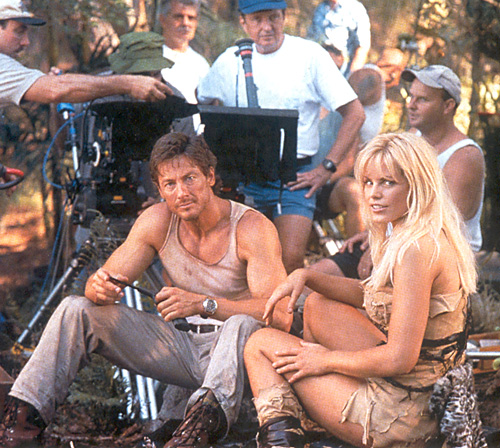 Usually she transforms into what she calls the “Darakna” – which essentially means she puts black mud on her body and gloves, with bone claws on to slash her enemies to death. Don’t worry: it’s neither bloody nor (after the first time they show it to us) very exciting. I just wonder if, by doing that, she also immediately became super-powered. though she already is a strong fighter. Or if it just made the killing easier for her, as she then wasn’t “quite herself” (to quote Norman Bates!).
Usually she transforms into what she calls the “Darakna” – which essentially means she puts black mud on her body and gloves, with bone claws on to slash her enemies to death. Don’t worry: it’s neither bloody nor (after the first time they show it to us) very exciting. I just wonder if, by doing that, she also immediately became super-powered. though she already is a strong fighter. Or if it just made the killing easier for her, as she then wasn’t “quite herself” (to quote Norman Bates!).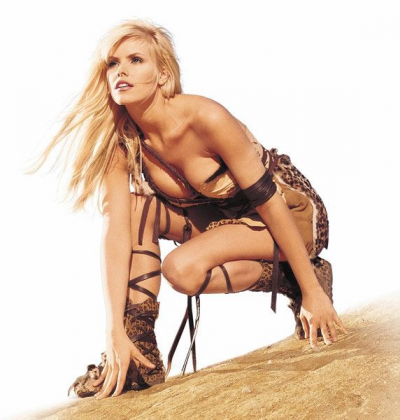 That said, while the show (like most shows of its ilk at the time) is underwhelming compared to “Hercules” and “Xena”, I do think the screenwriters really tried to come up with as inventive stories as possible, given the fact that the “adventures in the jungle” was already a genre as dead as a door-nail. There are some good ideas here: plants that raise certain hormones in your blood, making you love-struck as well as murderous (therefore having Cutter and Sheena try to kill each other); a female black Rocky in the jungle, faced with countless attacks by her opponents; a kind of “X-files”-episode, with the audacity to play that show’s musical theme a couple of times in the episode; or the dangerous giant ants that eat anything. setting Cutter and Sheena in quite a distressing position.
That said, while the show (like most shows of its ilk at the time) is underwhelming compared to “Hercules” and “Xena”, I do think the screenwriters really tried to come up with as inventive stories as possible, given the fact that the “adventures in the jungle” was already a genre as dead as a door-nail. There are some good ideas here: plants that raise certain hormones in your blood, making you love-struck as well as murderous (therefore having Cutter and Sheena try to kill each other); a female black Rocky in the jungle, faced with countless attacks by her opponents; a kind of “X-files”-episode, with the audacity to play that show’s musical theme a couple of times in the episode; or the dangerous giant ants that eat anything. setting Cutter and Sheena in quite a distressing position. While the film itself is not that good, it did introduce me to a new action heroine of history: Olga of Kiev, who seems to have been a serious bad-ass, even by the high standards of European bad-asses of the time. There’s some suggestion she was of Viking extraction, with her name originally Helga, and that would certainly make sense. She married Igor of Kiev around 903, and after his death, ruled the state of Kievan Rus’ for 18 years, in the name of her young son, Svyatoslav. The Russian Primary Chronicle
While the film itself is not that good, it did introduce me to a new action heroine of history: Olga of Kiev, who seems to have been a serious bad-ass, even by the high standards of European bad-asses of the time. There’s some suggestion she was of Viking extraction, with her name originally Helga, and that would certainly make sense. She married Igor of Kiev around 903, and after his death, ruled the state of Kievan Rus’ for 18 years, in the name of her young son, Svyatoslav. The Russian Primary Chronicle 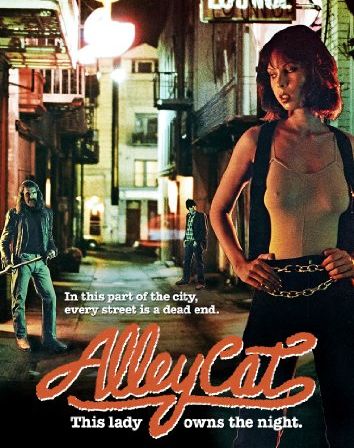
 This made for TV movie first aired in January 1984, and was likely fairly topical at the time, with Geraldine Ferraro then on her way to becoming the VP behind Walter Mondale. It’s still just her and Sarah Palin as far as major party tickets in American history go. Her candidacy is foreshadowed by this piece of masculine paranoia. Stowe plays Dr. Sharon Fields, a doctor who is sued for malpractice after her hospital patient, a leading Congressman, had an unexpected psychotic episode, which leads to him playing in traffic. She finds a series of similar deaths linked by trace elements found in autopsies, all of men, whose deaths benefit women, in general or specifically. Turns out they are assassinations, carried out to the orders of an ancient, matriarchal cult: they now have their eye set on the leading presidential candidate – who just happens to have picked a woman as his running mate.
This made for TV movie first aired in January 1984, and was likely fairly topical at the time, with Geraldine Ferraro then on her way to becoming the VP behind Walter Mondale. It’s still just her and Sarah Palin as far as major party tickets in American history go. Her candidacy is foreshadowed by this piece of masculine paranoia. Stowe plays Dr. Sharon Fields, a doctor who is sued for malpractice after her hospital patient, a leading Congressman, had an unexpected psychotic episode, which leads to him playing in traffic. She finds a series of similar deaths linked by trace elements found in autopsies, all of men, whose deaths benefit women, in general or specifically. Turns out they are assassinations, carried out to the orders of an ancient, matriarchal cult: they now have their eye set on the leading presidential candidate – who just happens to have picked a woman as his running mate.